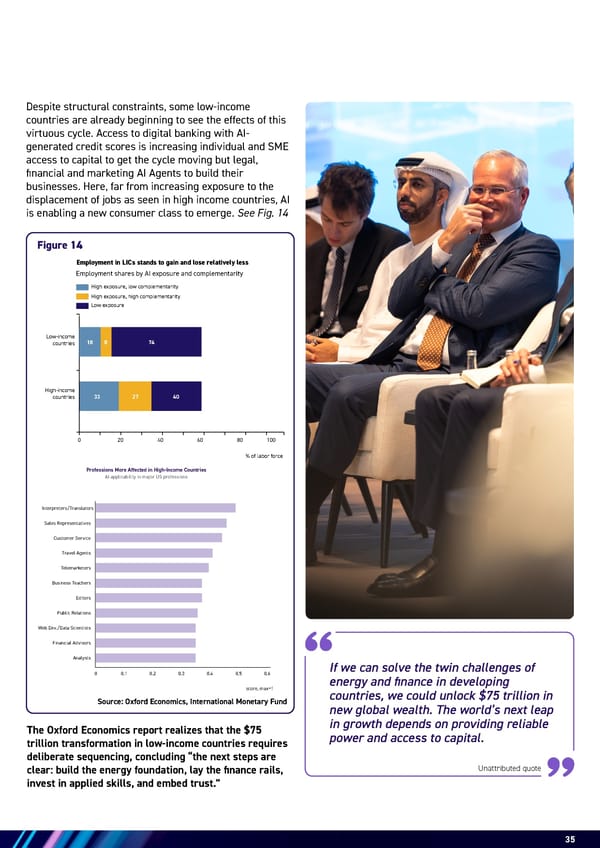35 The Oxford Economics report realizes that the $75 trillion transformation in low-income countries requires deliberate sequencing, concluding “the next steps are clear: build the energy foundation, lay the finance rails, invest in applied skills, and embed trust.” Source: Oxford Economics, International Monetary Fund Figure 14 Employment in LICs stands to gain and lose relatively less Employment shares by AI exposure and complementarity High exposure, low complementarity Low-income countries High-income countries High exposure, high complementarity Low exposure % of labor force 0 20 40 60 80 100 18 33 27 40 8 74 score, max=1 Interpreters/Translators Sales Representatives Customer Service Travel Agents Telemarketers Business Teachers Editors Public Relations Web Dev./Data Scientists Financial Advisors Analysts Professions More Affected in High-Income Countries AI applicability in major US professions 0.1 0.2 0.3 0.4 0.5 0.6 0 Despite structural constraints, some low-income countries are already beginning to see the effects of this virtuous cycle. Access to digital banking with AI- generated credit scores is increasing individual and SME access to capital to get the cycle moving but legal, financial and marketing AI Agents to build their businesses. Here, far from increasing exposure to the displacement of jobs as seen in high income countries, AI is enabling a new consumer class to emerge. See Fig. 14 Unattributed quote If we can solve the twin challenges of energy and finance in developing countries, we could unlock $75 trillion in new global wealth. The world’s next leap in growth depends on providing reliable power and access to capital.
 Energy & AI: Twin Engines Turbo-Charging Economic Growth Page 34 Page 36
Energy & AI: Twin Engines Turbo-Charging Economic Growth Page 34 Page 36